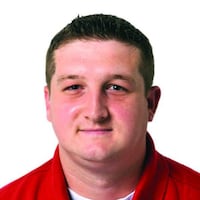Promise Zone Implementing Partners
The following organizations have committed to provide more than $104 million over the next 10 years in the Promise Zone area, including:
• The Springfield Promise Neighborhood
• The city of Springfield
• Wittenberg University
• Clark State Community College
• Springfield City School District
• The Chamber of Greater Springfield
• The Clark County Prosecutor’s Office
• The Clark County Combined Health District
• The Ohio State University Extension Office
• United Way
By The Numbers
$104 million: Amount of money committed over the next 10 years by 10 organizations to improve the south side.
21,000: Number of people who live in the Promise Zone area.
4: Number of city elementary school attendance areas included in the Promise Zone.
Staying with the story
The Springfield News-Sun has reported on the Promise Neighborhood initiative since it was first announced in 2010.
More than one-third of the city’s population could be designated as living in a federal Promise Zone designed to reduce poverty and create more opportunities for south side residents, if approved later this year.
The Springfield Promise Neighborhood would be expanded to four south side elementary school attendance areas — Lincoln, Perrin Woods, Fulton and Kenwood elementary schools — under the name of the Springfield Promise Zone.
“The application demonstrates an entire community is dedicated, both financially and in thought and theory, to making a change for the future,” said Springfield Community Development Director Shannon Meadows.
The poverty rate inside the potential Springfield Promise Zone is about 35.5 percent, including some areas at more than 50 percent. About 16 percent of working-age people in the zone are unemployed, while 83.5 percent are underemployed.
The city of Springfield and Promise Neighborhood leaders applied for the Promise Zone designation through the U.S. Department of Housing and Urban Development last week.
The application shows 10 implementing partners have already committed more than $104 million over the next 10 years for programs already being administered in those neighborhoods — investments that will take place regardless of approval, Meadows said.
“It’s a document recognizing many of the activities and strategies being carried out in the community,” she said.
No federal money is guaranteed as part of the designation process, but it opens up the possibility for specific federal funding not available to other organizations, Meadows said.
“It’s about going towards the front of the line for funding applications,” she said.
The expansion of the current Promise Neighborhoods will occur regardless of whether the designation is approved, said Lincoln Promise Neighborhood Director Bob Welker.
“It’s extraordinary for a community this size to have this kind of community support,” Welker said.
The Promise Zones Initiative was established by President Barack Obama in 2013 to allow the federal government to partner with high-poverty communities across the country to improve economic and educational opportunities, housing, jobs, public safety and healthcare.
Thirteen urban areas across the country received designations — but none in Ohio. HUD is expected to announce five more urban area designations by the end of spring.
“If we’re successful, it will be a great step forward,” Springfield Mayor Warren Copeland said. “It will help move us up in the pecking order at the federal level.”
The proposed plan helps people visualize what’s already happening and what can grow out of there, whether or not there’s federal money, Copeland said.
“The money will be helpful along the way, if it shows up,” Copeland said.
The Lincoln Promise Neighborhood initiative began six years ago as a way to increase educational opportunities and redevelop the 110-block neighborhood that has the highest poverty rate of the city school district’s student population. The organization’s annual budget is about $200,000, made up mostly of private dollars from local foundations and some state and federal sources.
The application is the next phase of the development of the Springfield Promise Neighborhood, said Executive Administrator Kali Lawrence. It also allows leaders and residents to understand the scope of the initiative and align it for maximum benefit in the future, she said.
“We’ve been trying to move towards convening people and getting all of the players around the table,” she said. “This was the event that gave us the opportunity to be able to do that.”
The Promise Neighborhood has been successful at Lincoln, said Springfield City School District Superintendent Bob Hill, and it can be implemented in other nearby elementary schools and neighborhoods as well.
“There’s no reason not to try to move that forward and see where it goes,” Hill said.
A part of the initiative also includes a program called CeaseFire, which was developed by local crime and social service leaders. The organization will hire “violence interrupters” to begin mediation with young people identified as potential shooters or victims.
Of the 12 murders that occurred in the city in 2015, seven happened inside the Promise Zone, according to the application.
“It holds great promise,” Copeland said. “It won’t solve all of the issues, but I think it could be very helpful to keeping some young men from ruining their lives.”
Both an advisory council and operations oversight committee will be created to manage the Promise Zone’s six areas of emphasis, which include education, job creation, crime reduction, access to healthcare and housing, and increased economic activity.
The designation also includes five more VISTA leaders, as well as a federal technical advisor, Meadows said.
Residents will often say leaders don’t care about the south side, said Brian Keith, a resident who also serves as the Promise Neighborhood VISTA leader. The application shows residents the community is committed to the future, he said.
“This puts the stamp on it,” Keith said.
About the Author
